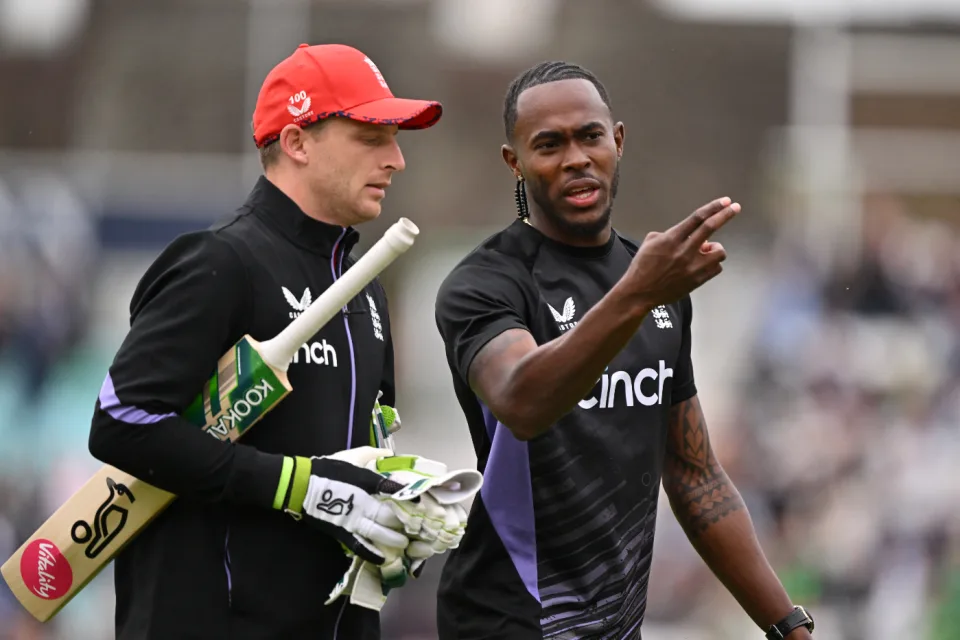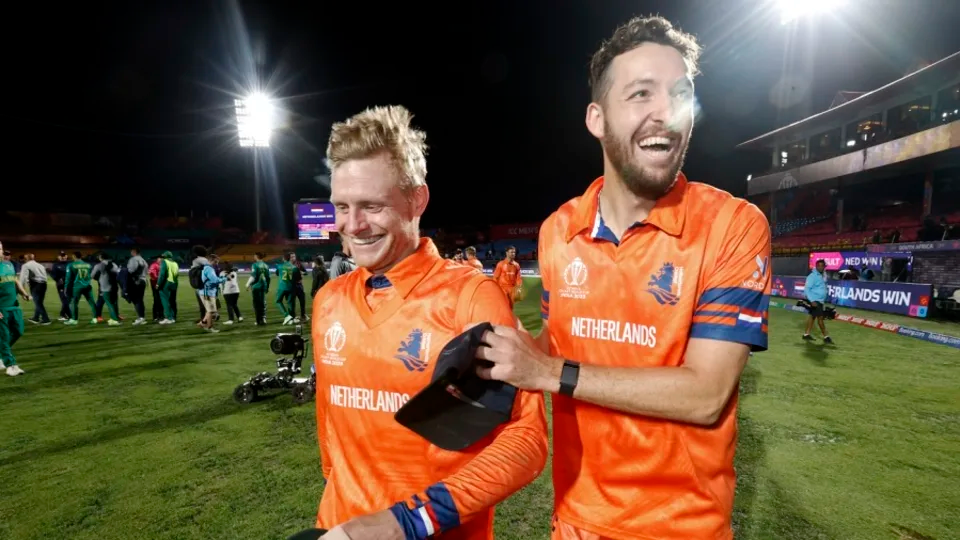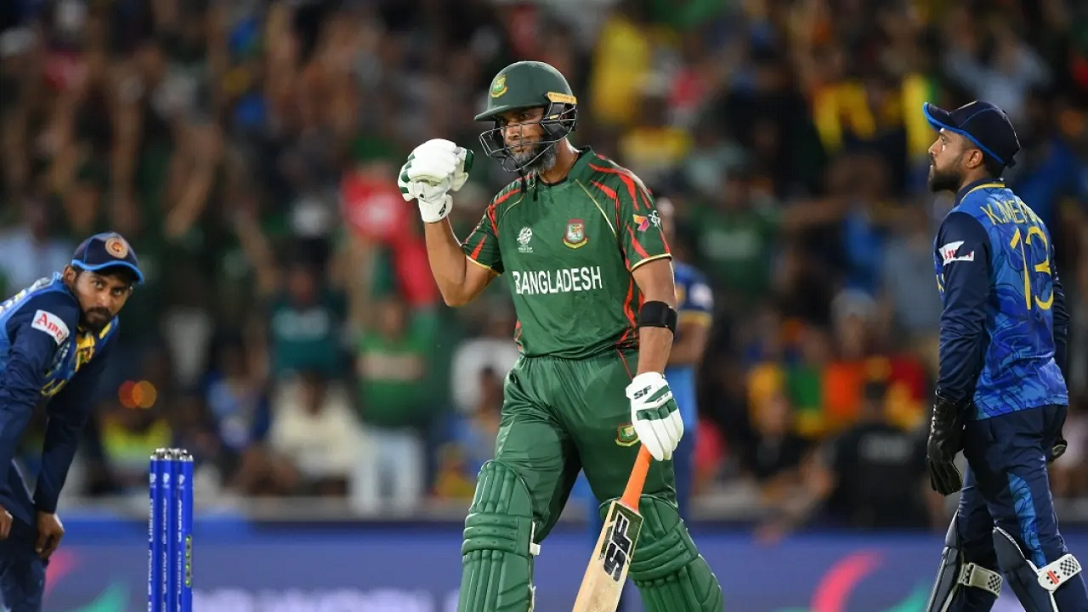Sports
All Blacks win but fail to impress

by Rajitha Ratwatte
47,000 plus fans at Auckland Eden Park for Aaron Smith’s 100 appearance for the All Blacks in the first of 3 Bledisloe Cup games against Australia. A greasy ball and not-so-dry conditions underfoot. Most of the first half was a penalty shoot-out as the All Blacks chose to score through the boot of Ritchie Mo’uanga whenever they got into range. The Wallabies retaliated but sadly missed the services of a reliable placekicker. In fact, the entire game would have had a different result if the Aussies had been able to convert the many penalties awarded to them and slot their kicks at goal. The inclusion of Damian Mackenzie at no15 was not to take the kicks as assumed. Mo’uanga still missed a few kicks from far left of the field and converted some beauties especially from long distance but D’Mac’s real role seemed to be at first receiver off the break downs with Mo’uanga occupying more attacking positions in the backline. The first half was meandering (an Aussie tactic seemed to be to slow the game down) its way to a 9 – 8 score until a good bit of on-field thinking by Sam Whitelock called for a kick to touch instead of taking another kickable penalty. The Blacks were able to score off the resulting line out. Half-time score reading 16 – 8 to the New Zealanders.
Ritchie Mo’uanga who was lurking on the wing, intercepted a long pass by the Wallabies and ran 80 meters to score under the posts showing his class and absolute superiority to anyone else who wears the no10 jersey these days. Shortly thereafter Reiko Ioane made an incisive run, threw a wild pass as is his penchant (and a reason why he is not in the centers) which was collected brilliantly by Aaron Smith who then passed to his skipper Whitelock who activated his three-quarters for a try which was disallowed by the TMO for what was deemed to be a forward pass from Smith to Whitelock. This non-try was the highlight of the game, and the pass was marginal if at all. Points denied, but wonderful spectator entertainment all the same. There was a similar pass during an Aussie try which drew no action from the TMO. Selective involvement from the TMO and the fact that the conversation between the TMO and the on-field referee is broadcast live is something that must be looked at very closely. The current situation leaves the on-field referee who is the person best able to make these calls unable to have his say on marginal decisions.
At this stage, the All Blacks were threatening to run away with the game, but the Aussies were not finished! Some great tactics using long throws and throws to the front of the line out caught the Blacks napping on occasion. There was also a three-quarter move involving a close formation and some quick passing that created a hole in the Black defence. Students of the game may wish to have a closer look at that, undoubtedly signs of some good thinking from the Aussie coaching staff. The All-Black forwards were not getting involved enough at the breakdowns and one wondered if their on-field leadership failed to take the greasy conditions underfoot into account. If they had played the game with more emphasis on the forwards, they may have made a bigger impression on the scoreline. They definitely gave away far too many penalties as they were found offside almost on every occasion that the line came up in defence inside All Black territory.
The Aussies scored twice in the closing stages of the game. All in all, four tries to each side with the Wallaby full back Tom Banks getting two possibly to compensate for the lack of distance of his touch finders. The final score 33 -25. It should be emphasised once again that if the Wallabies had a decent placekicker, they may have changed the result of the game! New Zealand’s tries came through Seevu Reece, Ritchie Mo’uanga, David Havili, and Damian Mackenzie. The All-Black bench did not make the expected impact and in fact, the winning margin was reduced after the substitutions happened. Beauden Barret had a forgettable game with a bad decision resulting in a clearance kick being charged down possible resulting in one of the last-minute Aussie tries. The Ritchie Mo’uanga – Aaron Smith combination as well as their individual brilliance remains unchallenged for superiority in today’s game. No bench player can better that. However, the non-involvement of forwards at the breakdown, particularly in wet and muddy conditions leaves this writer wondering if Rugby Union is looking more and more like Rugby League and if there is room for two such similar codes in the minds of spectators. Or is this the new face of Rugby Union and are we old school thinkers being too conservative?
supersubsports@gmail.com
Sports
England face Australia in the battle of champions

The first truly heavyweight clash of this expanded T20 World Cup format comes freighted with both history and subplots. A rematch of the 2010 World T20 final at Kensington Oval, the match pits Jos Buttler’s defending champions – who are aiming to become the first team to retain the trophy – against the Australian winning machine, victors at the 2021 edition and current world title-holders in Test and ODI cricket. And that’s before you throw in the Ashes for afters.
Already there is added pressure on England, after the rain in Bridgetown led to a share of the points in their opener against Scotland (and that having conceded 90 runs from 10 overs without taking a wicket in a tepid bowling display). Lose to their oldest rivals and it will leave their Super 8 prospects open to being waylaid by the perils of net run-rate calculations, or worse.
The Scotland match was the third abandonment in five suffered by England, after a rain-affected home series against Pakistan, which has clearly hampered their readiness for this campaign after almost six months without playing T20 together. It does not take much for a side to click in this format – and England looked in decent shape when they did get on the field against Pakistan – but Buttler will be anxious for things to go their way on Saturday, if only to avoid further questions referencing the team’s disastrous ODI World Cup defence last year.
Australia, under the laidback leadership of Mitchell Marsh would love nothing more than to add to the English sense of jeopardy – having helped bundle them out of the tournament in India on the way to taking the crown. Their head to head record is less impressive in T20 however, with England having won six of the last seven completed encounters, as well as that 2010 final.
Despite a wobble with the bat, Australia avoided mishap against Oman earlier in the week, the experience of David Warner and Marcus Stoinis shining through in difficult batting conditions. Surfaces in the Caribbean – not to mention those games staged in the USA – have already had teams scratching their heads; rather than the “slug-fest” England had prepared for, following a high-scoring tour of the Caribbean in December, it looks as if boxing smart may be the way to go.
Speaking of Warner, this could be the last time he faces up against England in national colours – and another match-winning contribution would likely reduce the chances of them meeting again in the knockouts. On the other side of the card is Jofra Archer, fresh from an emotional maiden outing at Kensington Oval and ready to take on Australia for the first time in any format since 2020. Can Mark Wood fire up England’s campaign, as he did during last summer’s Ashes? Will Pat Cummins be back to harass the old enemy once again? Seconds out, it’s almost time to rumble.
Cummins is set to return after being rested for the Oman game, which saw Mitchell Starc leave the field with cramp. Starc is understood to be fine and could keep his place – which would likely see Nathan Ellis miss out. Marsh is still not fit to bowl, with Australia likely to continue with the allrounder combination of Stoinis and Maxwell to give them cover.
Australia (probable XI): David Warner, Travis Head, Mitchell Marsh (capt), Glenn Maxwell, Marcus Stoinis, Josh Inglis (wk), Tim David, Pat Cummins, Nathan Ellis/Mitchell Starc, Adam Zampa, Josh Hazlewood
The one change England may consider is Reece Topley coming in for Wood, with the expectation that there will be some rotation among the seamers through the course of the tournament.
England (probable XI): Phil Salt, Jos Buttler (capt & wk), Will Jacks, Jonny Bairstow, Harry Brook, Liam Livingstone, Moeen Ali, Chris Jordan, Jofra Archer, Adil Rashid, Reece Topley/Mark Wood
[Cricinfo]
Sports
South Africa up against their bogey team in batter-unfriendly New York

Once is coincidence, twice is a clue, and three times is proof.
To paraphrase Agatha Christie, that is the narrative around South Africa’s meeting with Netherlands at this T20 World Cup.
The Dutch beat South Africa at the 2022 tournament and ended their semi-final hopes in a match where South Africa appeared to be sleep walking, and then beat them again at the 2023 ODI World Cup, where they exposed South Africa’s vulnerability in the chase. If they to do the treble, not only will Netherlands take the lead in Group D, but they will offer conclusive evidence of the threat they pose to Full Members, especially South Africa.
Of course, it will take some doing after South Africa’s opening performance against Sri Lanka, where they reduced their opposition to their lowest T20I total and chased it down in fairly straightforward fashion thanks to the most stable middle-order of their white-ball era. In Aiden Markram, Tristan Stubbs, Heinrich Klaasen and David Miller, South Africa have bankers and big-hitters and, for this match, they also have the advantage of experience. They’ve already played at Eisenhower Park, and have first-hand knowledge that run-scoring doesn’t come easily;Klassen said they are prepared to use their “cricket brains” and play “smarter cricket”.
But the conditions could be good news for Netherlands, who are not naturally a line-up of big hitters and build their innings on a foundation of turning ones into twos. In other words, they tend to take a slightly more conservative approach to batting, which may work well here, but they’ll be wary of the uneven bounce of the surface and will have to come up with plans to counterattack especially against South Africa’s seamers. Their own bowlers were exemplary in Dallas and will look to build on that performance against a line-up that will likely be more proactive than Nepal’s, but who they have managed to keep quiet not once, but twice in the past. Third time’s the charm, they say.
Anrich Nortje’s stunning return to form against Sri Lanka means South Africa may not have to tinker with the bowling combination, and Gerald Coetzee and Tabraiz Shamsi may have to wait their turns to get a game. The batting line-up should be unchanged, with no space for Ryan Rickelton yet.
South Africa: Quinton de Kock (wk), Reeza Hendricks, Aiden Markam, Tristan Stubbs, Heinrich Klaasen (wk), David Miller, Marco Jansen, Keshav Maharaj, Kagiso Rabada, Ottneil Baartman, Anrich Nortje
Conditions in New York may tempt Netherlands to include an extra seamer and they have Kyle Klein in their squad. But it could come at the expense of a shortened batting line-up and they may not want to risk that.
Netherlands: Michael Levitt, Max O’Dowd, Vikramjit Singh, Sybrand Engelbrecht, Scott Edwards (capt, wk), Bas de Leede, Teja Nidamanuru, Logan van Beek, Tim Pringle, Paul van Meekeren, Vivian Kingma
[Cricinfo]
Latest News
Mustafizur, Rishad, Hridoy dazzle in Bangladesh’s tight two-wicket win over Sri Lanka

Nuwan Thushara’s last over brought Sri Lanka screaming back into the match,as he first bowled Rishad Hossain, and then nailed Taskin Ahmed in front of the stumps with a pinpoint swinging yorker. This left Bangladesh eight wickets down, with 12 runs still to get.
However, the experienced Mahmudullah was at the crease for Bangladesh, and despite some further nervy moments, pushed Bangladesh across the line off the last ball of the 19th over.
But this was a match chiefly decided by Bangladesh’s own outstanding bowling. Mustafizur Rahman was the best among them, using shorter lengths and his cutters efficiently, to claim figures of 3 for 17. Rishad Hossain’s three-for through the middle overs also kept Sri Lanka quiet.
Mustafizur was instrumental in Sri Lanka’s downward spiral through the middle overs, which culminated in a crash-and-burn end. Ultimately, their inability to find boundaries, or even rotate strike against good Bangladesh bowling resulted in their downfall. A score of 125 for 9 always seemed poor on a decent pitch, even if their bowlers made a match of it in the end.
Brief scores:
Bangladesh 125 for 8 in 19 overs (Towhid Hridoy 40, Litton Das 36; Dhanajaya de Silva 1-11, Nuwan Thushara 4-18, Wanidu Hasaranga 2-32, Matheesha Pathirana 1-27) beat Sri Lanka124 for 9 in 20 overs (Pathum Nissanka 47, Dhananjaya de Silva 21; Tanzim Hasan Sakib 1-24, Taskin Ahmed 2-25, Mustafizur Rahman 3-17, Rishad Hossain 3-22) by two wickets
[Cricinfo]












